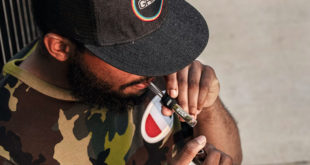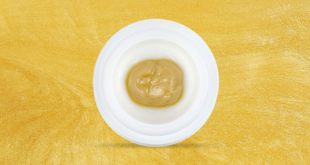
Last week, Arizona was host to two anti-marijuana crusaders from Colorado: Colorado Springs Mayor John Suthers and Jim Gerhardt from Colorado Drug Investigators Association. During their stay, the Coloradans blatantly mislead Arizonans about the after-effects from Colorado’s marijuana legalization, basically claiming that it has been a catastrophe. But Denver journalist Luc Hatlestad from 5280.com heard about the hoodwinking campaigners and decided to debunk their abundance of misleading information forced onto Arizonans. Hatlestad’s article reads:
One of the primary casualties in the 2016 political scene is the irrelevance of facts. From political races to policy debates, too many people have decided that their personal point of view is just right, regardless of what empirical data might actually indicate.
Case in point: This week, two Coloradans visited Arizona to warn voters against legalizing marijuana. Colorado Springs Mayor John Suthers (our state’s former attorney general) and anti-pot crusader Jim Gerhardt, an official with the Colorado Drug Investigators Association, were invited to weigh in on Arizona’s Proposition 205, a ballot measure to regulate marijuana like alcohol, much like the one Coloradans approved (by 10 points) in 2012.
Suthers was vehemently opposed to marijuana from the beginning, although the famously by-the-book official judiciously enforced the new legalization law once it was in place. At a news conference outside the Arizona Department of Public Safety, Suthers said Colorado teens use more weed than in any state in the nation. This is true, but what he neglected to add is that teen use here and nationwide has declined since medical and recreational marijuana laws have begun passing in multiple states. The Centers for Disease Control (CDC) has concluded so far that legalization laws have not increased teen use and may even be contributing to lower usage rates. Among the reasons: These laws invariably are accompanied by aggressive education campaigns designed to dissuade young people from experimenting with the drug. The fact that their parents are now free to use marijuana may also have unquantifiably dampened whatever rebelious impulse teens might have to try it.
The two Coloradans also declined to mention the recent poll that showed 60 percent of Coloradans say legalization has benefited the state, and they oppose repealing it—which would eliminate a $1 billion-plus industry—by a margin of 51–36. And while Gerhardt cited anecdotal evidence of an “increase of [crime-related] issues and problems,” the actual statistics tell a different story. Even supposed increases in marijuana-related traffic incidents are inconclusive at best because no one has yet devised a reliable breathalyzer-type device to detect the drug, and because such incidents may have involved other drugs or alcohol.
To be sure, the legalization world has plenty of kinks to work out and will for the the foreseeable future. But with medical or recreational measures on the ballot in at least nine states this year, an additional 22 percent of the U.S. population could live in places with some form of legalization come November 9, and we’re already seeing so-called “legitimate” businesses identifying and capitalizing on marijuana’s economic opportunity. The anti-pot ideologues can spread all the misleading or incomplete information they want, but if they truly want to serve their communities they’d be better off doing whatever they can to make this new reality—increasingly legal and widely accepted—as safe as it can be.
If passed, Prop 205 will allow Arizona adults 21 and older to possess limited amounts of marijuana, establish a government-regulated system in which marijuana is regulated similarly to alcohol, and enact a 15-percent tax on retail marijuana sales. A majority of the tax revenue would be directed to Arizona schools and other education programs.
Photo: phoenixnewtimes.com
 AZ Marijuana Arizona Marijuana Info
AZ Marijuana Arizona Marijuana Info






